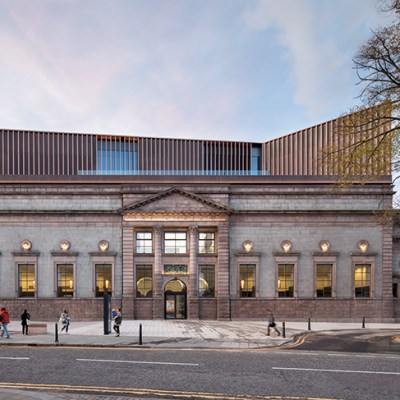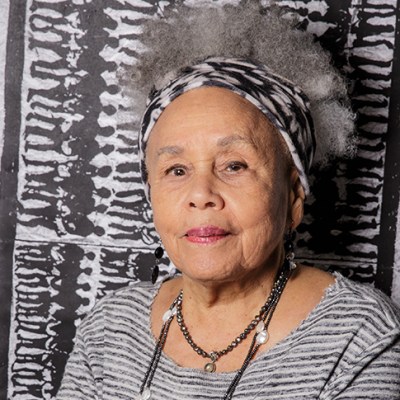The Bather (c. 1885) by Cézanne used to be the first work to greet a visitor beginning a tour of the permanent collection of the Museum of Modern Art. His eyes are downcast and his legs are planted in a landscape that has a disjunctive, jarring scale. He is uncertain, yet he is still man, the measure of things. In MoMA’s latest expansion, with architects Diller Scofidio + Renfro and Gensler adding 40,000 sq ft of exhibition space to the museum, the collection has been entirely rehung. One might expect a fresh and explosive beginning, yet now visitors enter the Alfred H. Barr, Jr. Galleries to find that The Bather has simply moved. The small partition wall on which it hung has been removed, the space has opened up, and Cézanne’s figure has found a new spot on a nearby wall alongside others. The impact is at once underwhelming and a quiet signal that man (as represented by white men) is no longer the measure of things.
MoMA’s recent exhibition programme has already been leading us in this direction. In the past year alone, it has staged a retrospective of the African-American painter, printmaker and draughtsman Charles White, and a wonderful overview of the visionary Congolese artist Bodys Isek Kingelez. This project continues in some of the exhibitions accompanying the rehang, with shows devoted to Pope.L and Betye Saar. However, a reckoning with the collection and its narrative was overdue. Art history has advocated this for decades, and the Whitney Museum of American Art has made more strides in this direction. If MoMA needed any additional spur, the Trump presidency’s unapologetic appeals to white nationalism have provided one. Meanwhile, the hordes of tourists wading through the galleries (three million each year, half from overseas) pointed to the means by which this inclusivity would be achieved: more space. After the museum’s last major expansion and renovation, in 2004, the museum had 128,000 sq ft; the new galleries bring that figure up to 166,000 sq ft. If regular visitors are not surprised by the character of the rehang, they will surely be relieved that the extra floor space has taken away some of the crush. For this visitor, the feeling upon leaving – that I actually wanted to return – is very new.
Installation view of Early Photography and Film (gallery 502) at the Museum of Modern Art, New York. Photo: Jonathan Muzikar; © 2019 The Museum of Modern Art

Nor does the rehang lack interest. In the room following The Bather, instead of Picasso’s Les Demoiselles d’Avignon (1907) and cubism, we now find early photography and film. The canonical tale of cubism’s smooth emergence from Cézanne, and a narrow matter of painterly exchanges, expands into a broad and complex issue of how artists responded to changing visual experience in the modern world. One more room along and you’ll find Les Demoiselles after all: normality seems to return, yet instead of being framed by a cubist context, i.e. by matters of form, the wall label presents the painting as concerning ‘representations of women, power, and cultural difference’. This shift from form to cultural politics gives licence to the room’s anachronistic counterpoints: some are ingenious, such as the anthropomorphic wooden shafts of Louise Bourgeois’s Quarantania, I (1947–53), some merely jarring, like Faith Ringgold’s American People Series #20: Die (1967), a depiction of a street riot during the Civil Rights era.
If women are important to the rehang of the fifth-floor galleries, African Americans lead the transformation on the floor below. Here, echoing the succession of familiarity and surprise upstairs, the galleries open much as they ever did, with surrealist reflections on the Second World War. Next is a room centered on Harlem, the centrepiece of which is a generous selection of pictures from Jacob Lawrence’s Migration Series (1940–41). This particular insertion helpfully shakes the triumphalism of the old post-war American narrative, the tale of New York trumping Paris. It also helps in adding local accents, accents that are stressed again at the beginning of the galleries devoted to art since 1970, where Cindy Sherman, Keith Haring and Jeff Koons set the mood. Long ago, for the modernist faithful, MoMA was the Vatican, the hander-down of art-historical doctrine that spread far and wide beyond New York. To have it recognise its immediate surroundings is a welcome and realistic humbling; MoMA remains mighty, but it doesn’t need to claim pre-eminence to boot.
Other novelties flow from merging galleries devoted to photography, prints, performance, and architecture and design into those holding painting and sculpture. While this sounds dramatic, it feels more like a correction of the museum’s past conservatism than any bold advance. Nevertheless, the insertions switch up the rhythm and tone of the galleries, with the steadier contrasts of painting and sculpture giving way to all manner of categories. Other surprises in the rehang are less about argument and reassessment than whimsical diversion, such as a room devoted to the circle of the painter and salonnière Florine Stettheimer, and another centred on the poet and curator Frank O’Hara. One of the stand-out rooms is the new Marie-Josée and Henry Kravis Studio, a double-height space devoted to performance, moving image and sound, which is inaugurated with David Tudor’s sound installation Rainforest V (variation I) (1973–2015). Everyday objects such as metal barrels and plastic tubing are transformed into musical instruments and dangle, hooting in the dark space; the effect resembles walking into a Joan Miró painting. A frisson of magic! When did you last feel that while trudging in line up MoMA’s escalators or jostling for space to see a picture?
The crowds, of course, are here to stay, and the museum’s director, Glenn Lowry, isn’t likely to pitch off into wilder realms if it threatens the box office. Having swallowed the more experimentally focused PS1 in Queens in 2000, the MoMA juggernaut can feel less obligation to be avant-garde. Years ago, it was the Metropolitan Museum of Art that housed New York’s monuments of culture while MoMA housed its experiments. Today, time is turning MoMA into a museum of monuments too; as the contemporary passes into recent history, the modern becomes a little ancient. MoMA just needs to retain some pizzazz while the process unfolds. With its latest makeover, it has managed it.
From the December 2019 issue of Apollo. Preview and subscribe here.



